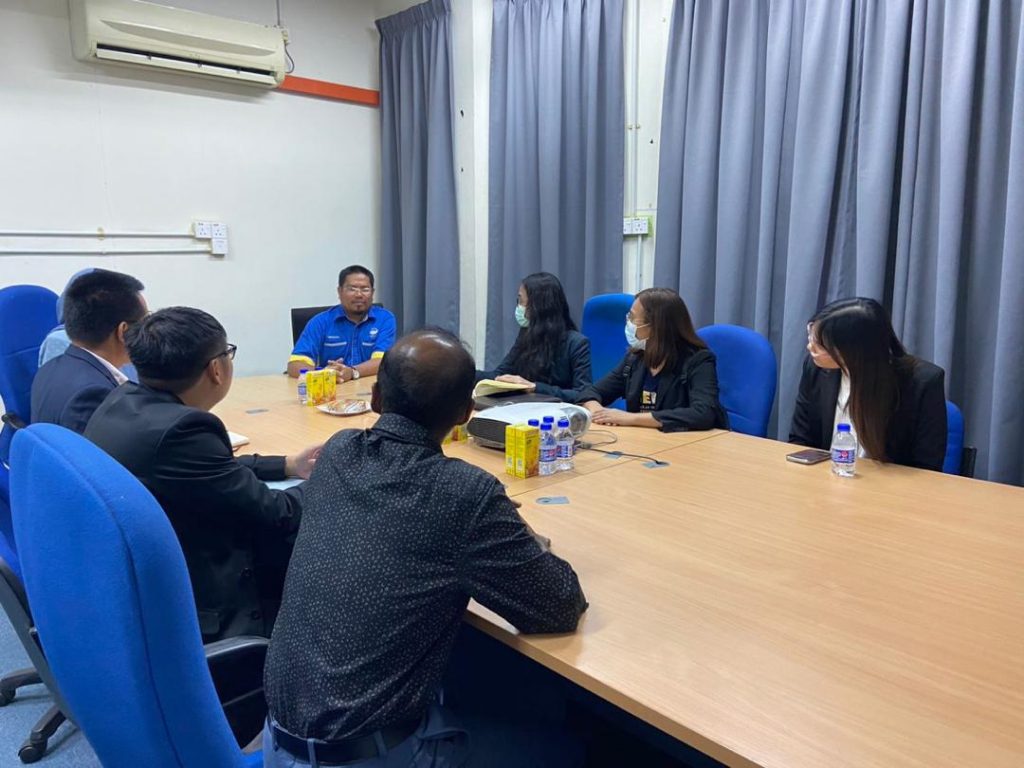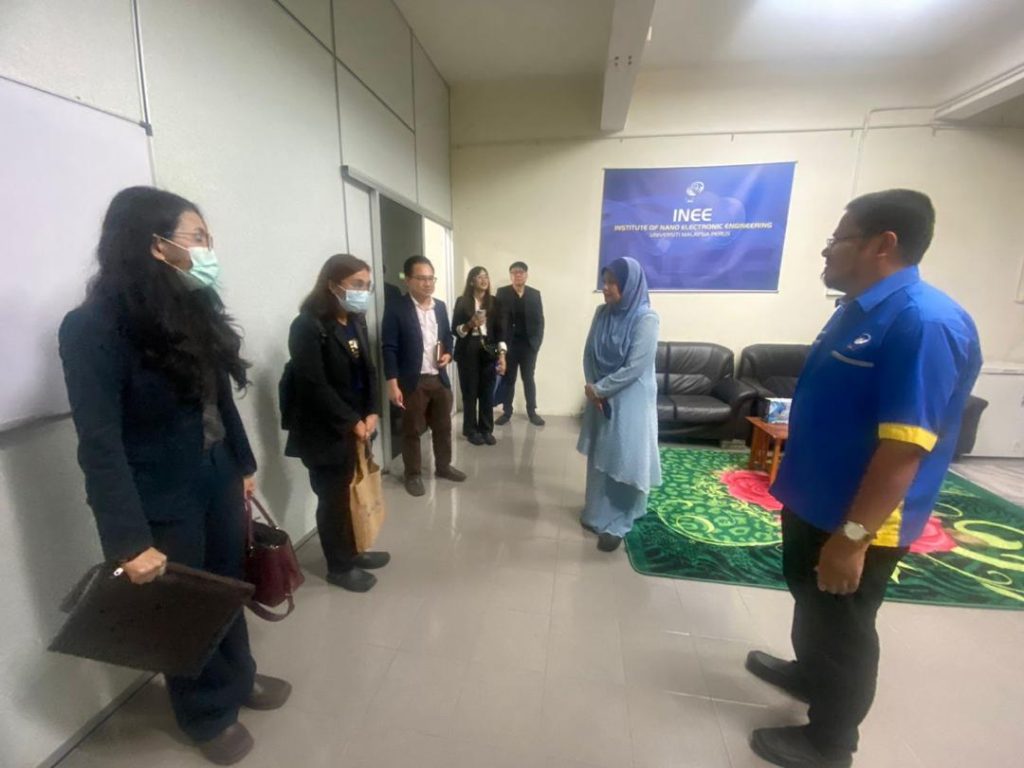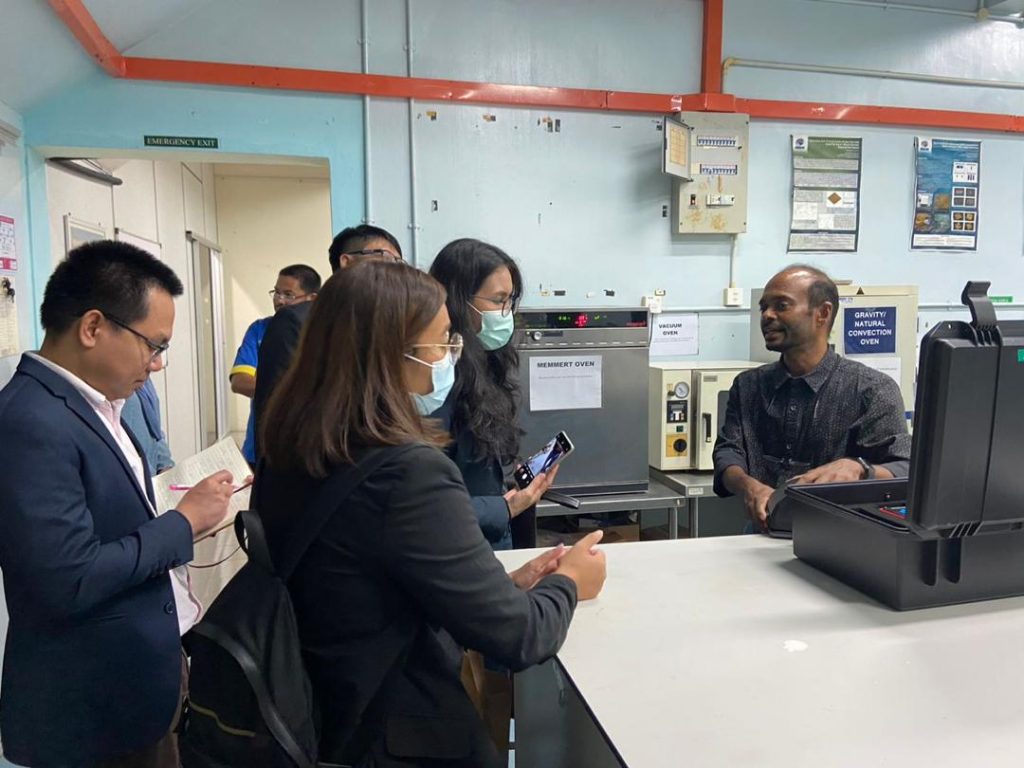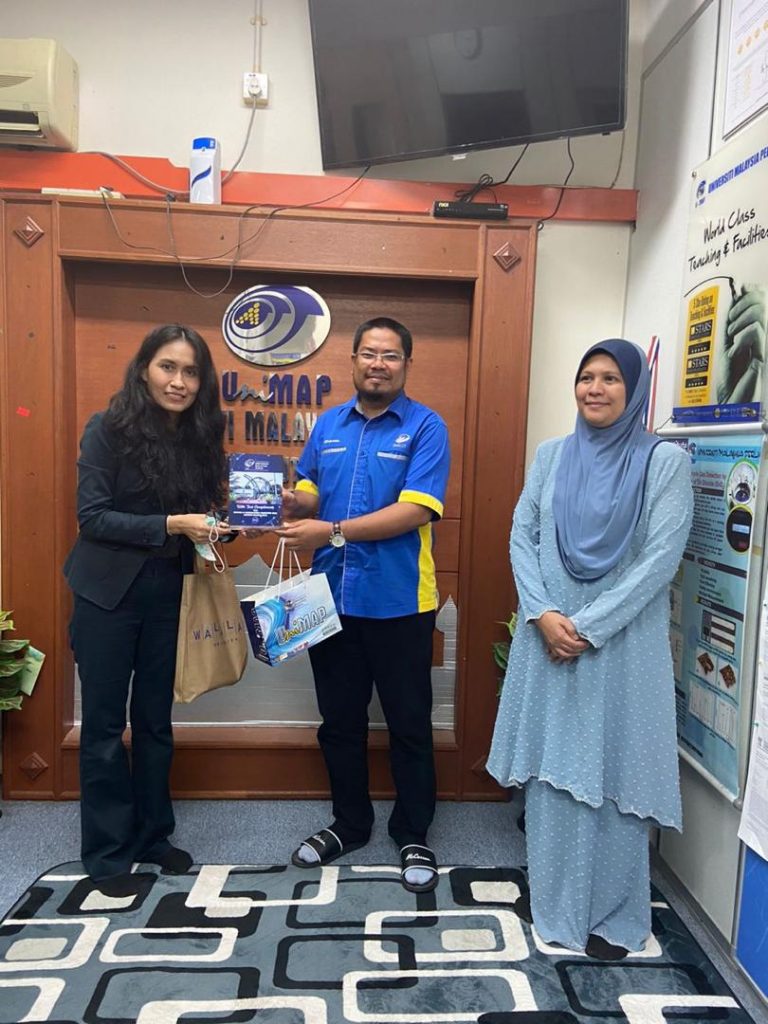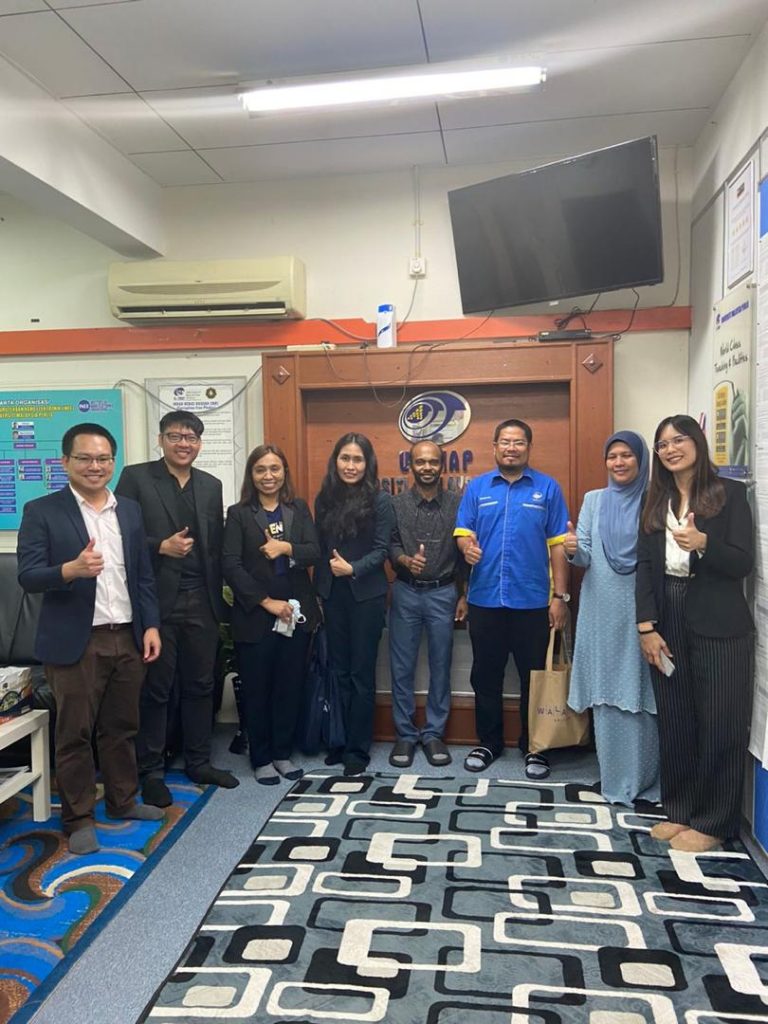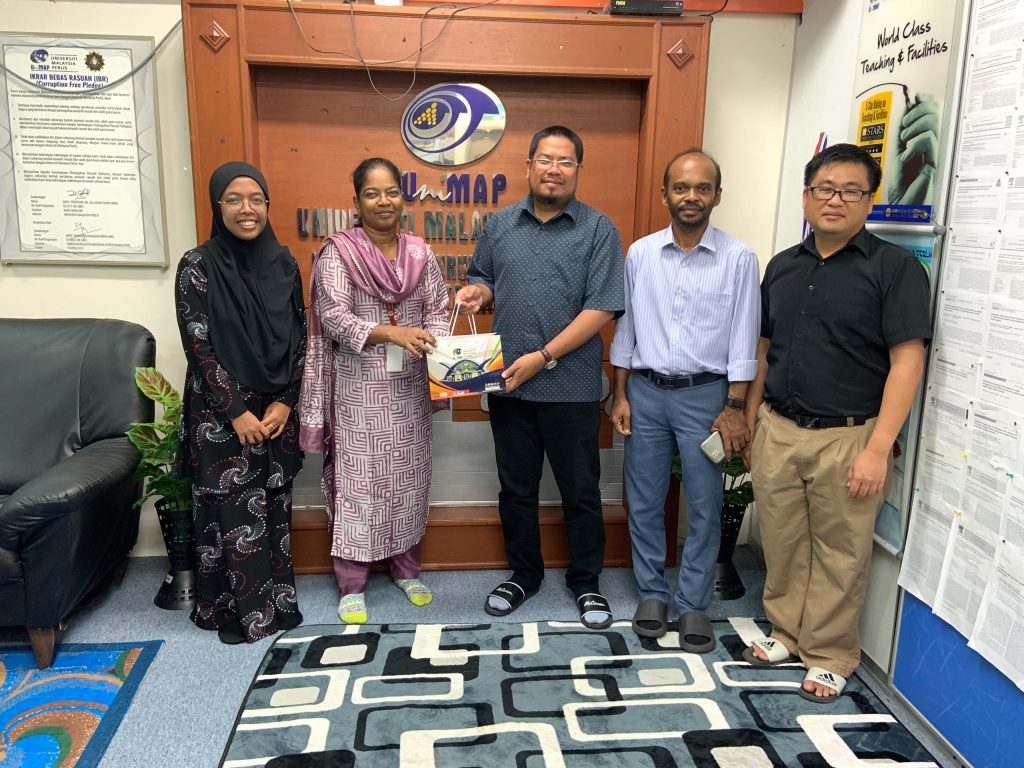The Institute of Nano Electronic Engineering (INEE) received a collaborative research visit from researchers of the Functional Materials & Nanotechnology CoE, Walailak University, Thailand, on June 5, 2024. This visit was led by Associate Professor Dr. Kotchaphan. Various research activities were planned, including joint grant applications and postgraduate student supervision. Thanks also to the Dean of the Faculty of Engineering & Electronic Technology (FKTEN), Associate Professor Ts. Dr. Siti Khadijah Za’aba. May this visit and discussion benefit all involved.
